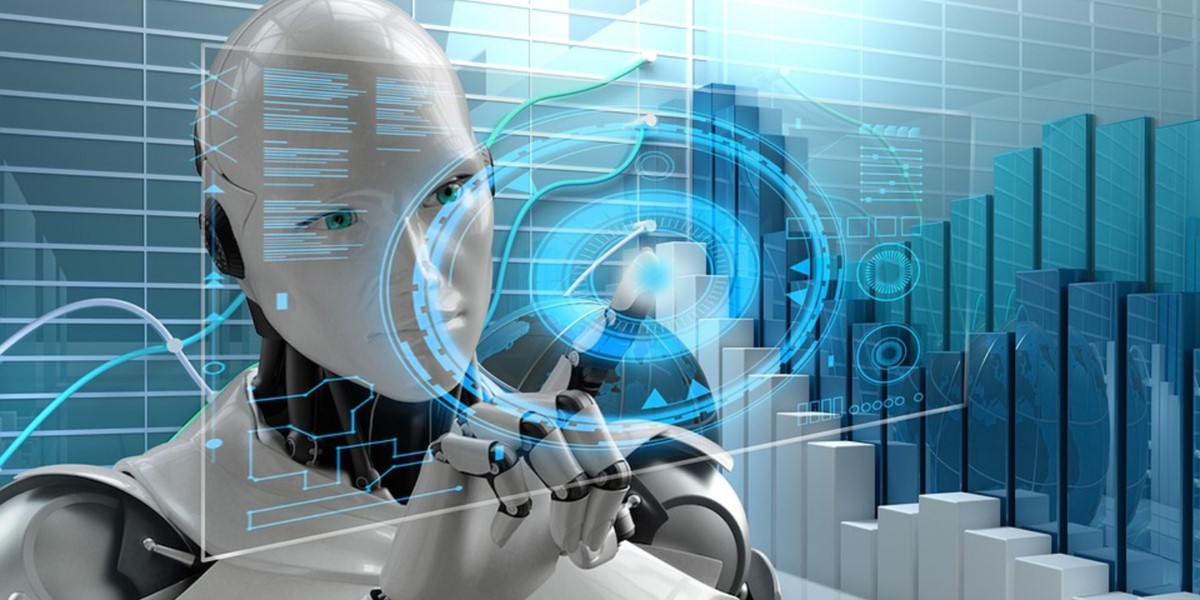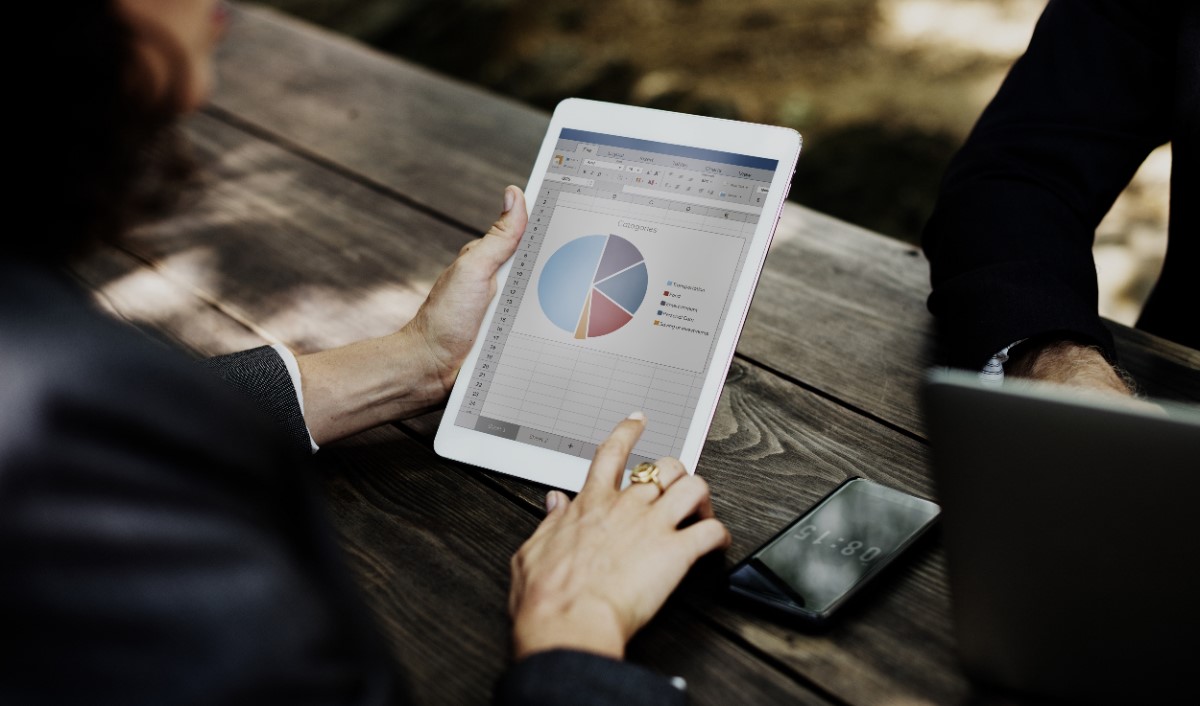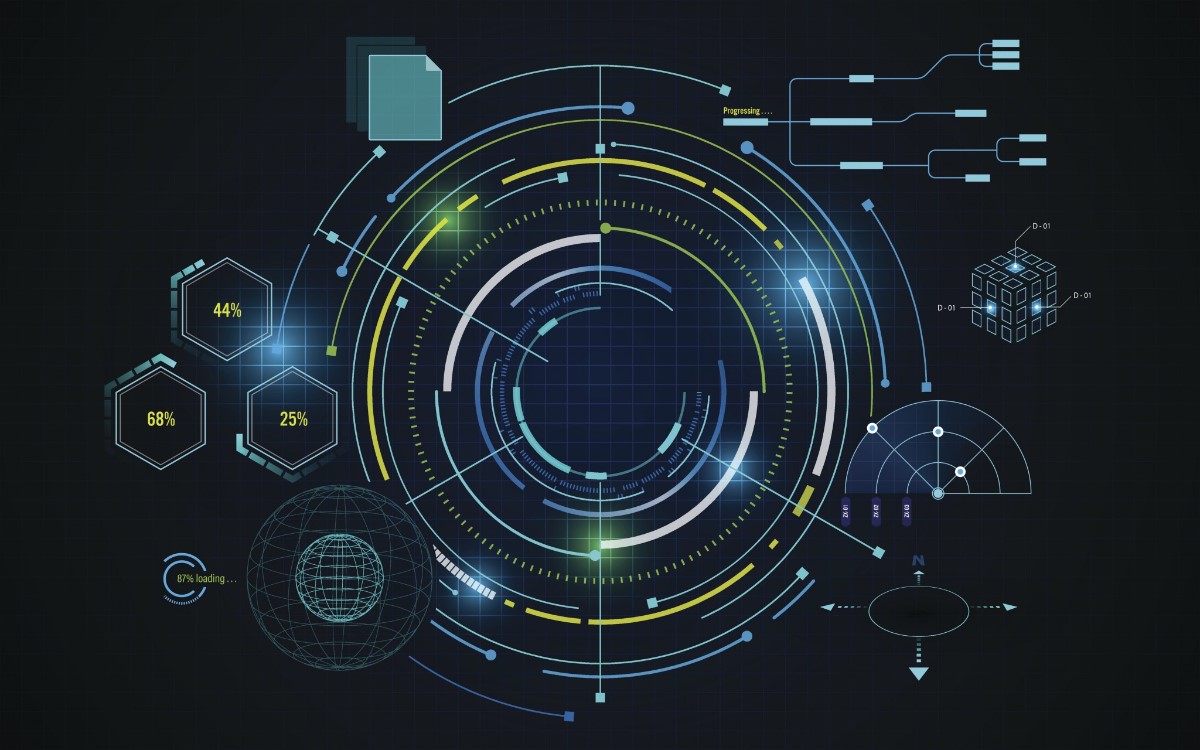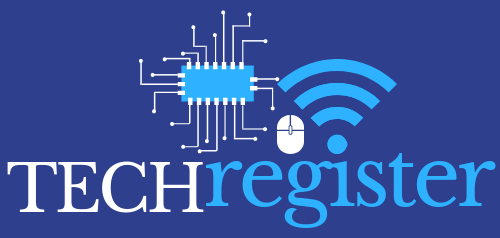Artificial intelligence (AI) was once an imaginary idea we only saw in movies and television shows. Today, AI is real and growing.
The following artificial intelligence statistics will uncover some facts and figures you’ll want to know about AI going for this year and beyond.
There is some debate about AI in our world today that ranges from it being benign and helpful to dangerous and harmful.
Whether you fall among one of these beliefs, or somewhere in between, we think you’ll enjoy reading more about artificial intelligence.
Among the current artificial intelligence ecosystem, we have robotics, machine learning, artificial neural networks, and natural language processing.
Machine learning involves programming that allows the system to learn from existing information and then applying that information for data predictions or for new data.
Robots are designed to interact with humans. So far, robots are predictable and only stay within the guidelines of their programming and some machine learning.
However, efforts are being made to train robots that have a degree of self-awareness. We think this is one of the things that causes concern among individuals.
In the next few paragraphs, we will discuss information about AI, where it is now and where it’s going in the future.
Without further ado, let’s talk about some key AI statistics.
Key Artificial Statistics in 2023
- 73% of people think AI and machine learning can positively affect the customer experience.
- 45% of people said they don’t understand how AI and ML work.
- The global AI market size was valued at $136.55 billion USD in 2022.
- The AI market size is expected to reach $1,811.75 billion USD by 2030.
- The biggest growth in the AI market is expected to be in the Asia Pacific market.
- 97 million new jobs will be created due to Artificial Intelligence by 2025.
Attitudes About Artificial Intelligence in 2023

We’re starting with how people look at and feel about AI.
We have found several surveys, polls, and other data to show the attitudes towards AI in 2023.
1. 73% of Survey Participants Claim to Think AI and Machine Learning Can Positively Affect the Customer Experience.
In a survey conducted in January 2023 in the United States, 73% responded that they think AI and machine learning can potentially affect the customer experience, also referred to as CX.
This is a substantial percentage of survey participants that see the potential for artificial intelligence and machine learning in the arena of brand usage of this technology.
(HubSpot Blog, Statista)
2. 48% of Survey Respondents Said They Would Engage with AI More Often if It Improved CX.
In the same survey from January 2023, 48% of respondents claimed that they would engage with artificial intelligence more frequently if it created a more consistent, convenient, and seamless customer experience.
This data shows us that people want a more consistent and seamless customer experience when engaging with brands in general.
So, if AI or ML (machine learning) will boost those expectations, they would gladly interact with it.
(HubSpot Blog, Statista)
3. 45% of Consumers in The Survey Said They Don’t Understand how AI and ML Work.
Lack of knowledge of how something works tends to be an issue or concern for consumers.
In fact, 45% of survey respondents in the same survey in January 2023 said they don’t understand how these technologies work.
While that doesn’t show a dislike or poor attitude toward AI and ML, it does show there are concerns among some consumers about knowing how these systems work.
In this instance, the lack of understanding is important.
(HubSpot Blog, Statista)
4. 48% of Respondents from The U.S. Survey from January 2023 Said that They Don’t Think that AI-Generated Faces or People Should Be Used in Social Media Advertising.
This one survey from January 2023 provides a lot of insight into what consumers are thinking when it comes to brand usage of AI and ML technologies.
Another piece of data extrapolated from this survey showed that 48% of its respondents think AI-generated images of people or faces should be used in social media advertising.
This data also referred to the use of Photoshopped images of people or faces.
Consumers don’t seem to want to see AI-generated or Photoshop-generated faces or people in social media ads.
Are brands taking note of these stats?
(HubSpot Blog, Statista)
5. 25% of Survey Respondents Revealed They Think Using AI and Photoshop Images Are Acceptable in Social Media Advertising.
In contrast to the 48% that don’t want AI-generated or Photoshopped pictures of people or faces in social media advertising, 25% said they think it’s acceptable.
So, only 25% of respondents to this specific question about the usage of Photoshopped and AI-generated people and faces by brands in social media advertising is fine.
Do you think that the younger generations will become more accepting of AI-generated faces and people in social media advertising? Is it an age-related thing, or not?
(HubSpot Blog, Statista)
Artificial Intelligence Market Size

This section is dedicated to artificial intelligence statistics related to the industry’s market size, current growth, and future growth.
6. The Global AI Market Size in 2022 Was Valued at $136.55 Billion (USD).
A large boost in the artificial intelligence market value occurred after 2021’s figure of $93.5 billion (USD).
Statistics from 2022 show that the most recent value of the AI market is $136.65 billion (USD), which is a difference of over $43 billion.
These statistics show that the artificial intelligence, including machine learning, market is growing. With recent developments that have been made to the public like ChatGPT, we should not be surprised at this growth.
(Grandview Research)
7. The AI Market Value Is Expected to Reach $1,811.75 Billion (USD) by 2030.
The current calculations show that the CAGR between 2023 and 2030 in market growth in the AI industry is 37.3%, which is where they get the $1,811.75 billion figure for 2030. This kind of data comes from gathering historical data in the industry and using that to forecast future growth.
This growth will impact sectors in the healthcare, retail, transportation, manufacturing, agriculture, media, advertising, and other industries as AI and ML are adopted into more organizations.
(Grandview Research)
8. A Precedence Research Report Shows that The Global AI Market Size Will Grow to $1,591.03 Billion by 2030.
While this data isn’t in contrast to Grandview’s, it’s another expert estimation about the market size of AI going into 2030. Also, the CAGR from Precedence shows 37.1% between 2022 and 2030, again, this is not in contrast to Grandview’s research.
This data also shows that the North American AI market was valued at $51 billion in 2021. In 2022, they estimated the AI market value at $119.78 billion. In this report, 41% of the market share belonged to the software sector in 2022.
The research reveals that there will be a rise in AI devices in the medical field and self-driving vehicles.
(Precedence Research)
9. The Biggest Growth in The AI Market Is Expected to Be in The Asia Pacific Market.
More data about the AI market size and growth shows that the Asia Pacific region can expect the highest growth at 42% between 2022 and 2030. Not only is this market expected to see the most growth, but it’s also expected to represent the fastest growing region in AI technology.
This data is in part due to the rise in investments and the adoption rates in AI among organizations in the Asia Pacific. Also, the Asia Pacific market has seen a rise in the adoption of AI across sectors like healthcare, automotive, food and beverage, and retail.
(Precedence Research)
The adoption of AI in North America has resulted in the largest market share in the industry at 43% in 2022. This rise in this region is due to the higher demand for automation and advanced technology in both software and hardware products.
This should come as no surprise since North America is home to the leaders in tech like Amazon, Apple, Facebook, Google, IBM, and Microsoft. Each of these companies have brought significant contributions to AI development.
(Precedence Research)
11. The Global AI Wearable Market Is Expected to Achieve $180 Billion (USD) by 2025.
While there are several segments in the AI industry, the global AI wearable market is estimated to reach $180 billion by 2025. This data is from 2019. So, this segment of the market is expected to see dynamic growth over the next couple of years.
Additionally, there are different sub-segments within the segments. For instance, head-mounted display gear as part of the AI wearables market is expected to experience a 20% CAGR between 2019 and 2025, mostly due to its use in gaming.
North America, Asia Pacific, and Europe are the regions where the highest and fastest growth is expected.
(Global Market Insights)
12. The Global Artificial Intelligence Market Value Is Predicted to Attain $267 Billion by 2027.
By 2027, the global AI industry is expected to be worth a whopping $267 billion (USD). This technology is also expected to furnish $15.7 trillion to the entire world economy by 2030. If you find this to be astonishing, you’re not alone.
Let’s face it, artificial intelligence and machine learning is still in its infancy as it’s tested and tried in experimentation groups. It’s especially new to certain industries, while not as new to others.
In contrast, some industries and organizations have paved the path for newer and more innovative AI technologies.
(Harvard Business Review Briefing 2021)
In the smart speaker sector, Amazon is the leader with a 28% market share in 2022. Amazon launched its first Echo devices in September 2019, and it’s still growing. Echo devices provide access to a smart assistant, Alexa.
Echo devices also provide a three-dimensional audio experience for its users through Dolby Atmos. Fortune Business Insights predicts that the global AI smart speaker market will be worth $34.24 billion by 2028.
In 2022, Google Home had 17.2% of the smart speaker global market share and Apple HomePod held 12.7%.
(Fortune Business Insights, Phone Arena, Statista 2)
14. The Global Autonomous Vehicle Market Is Predicted to Reach Revenues of $15.55 Billion (USD) by 2023.
The global annual CAGR of the self-driving vehicle market is 31.19%.
This AI market sector is estimated to generate $15.55 billion by 2030, according to Bloomberg Business.
According to Verified Market Research, this market will involve a variety of automobiles across all industries in the automotive sector. Most of this data related to fully or semi-autonomous vehicles and passenger cars and commercial vehicles across North America, Europe, Asia Pacific, and the rest of the world where people buy cars.
(Bloomberg Business)
15. The Global Retail AI Market Is Estimated to Reach $31.18 Billion in Value by 2028.
The global AI retail sector was valued at $3.75 billion in 2020 and set to grow to $4.84 billion in 2021. Data forecasts for between 2021 and 2028 revealed that the global AI retail market size will achieve $31.18 billion in 2028 at a CAGR of 30.5%.
This is happening quickly due to the adoption of artificial intelligence all over the world in retail markets. AI technology is already being used at some level for automation in retail markets but is expected to experience robust growth going into 2023 to 2030.
(Fortune Business Insights 2)
Artificial Intelligence In Marketing

We will focus on how AI has impacted and will impact marketing and advertising.
We will be addressing AI like ChatGPT and Dall-E as well as other types of AI that can be used in marketing.
16. 90% of Marketing Experts Across 35 Countries Used AI Tools for Customer Interactions in 2022.
A worldwide survey conducted in 2022 discovered that across 35 countries, 90% of marketing professional participants said that they used AI tools for customer engagements in 2022.
Moreover, 88% of these surveyed marketing professionals said that the AI tools used helped to personalize their customers’ experience across channels.
For reference, in 2021, 88% of marketers were using AI tools to help with customer interactions.
(Statista 3)
17. In 2020, a Survey Revealed that 41% of Global Marketers Experienced an Increase in Revenue and Performance by Using AI Tools for Marketing.
A global survey conducted among worldwide marketers in late 2020 resulted in 41% of its respondents saying that they saw an improvement in their performance and a boost in their revenue growth from adopting AI tools.
Furthermore, in a 2021 Gutman study, 38% associated their ability to create a personalized or tailored experience for customers with the use of AI in their marketing efforts.
(Diva Portal 2022)
18. In 2019, 40% of Sales and Marketing Teams Proclaimed that Machine Learning and Artificial Intelligence Is a Critical Element to Departmental Success.
According to Forbes in 2019, 40% of sales and marketing teams said that data science related to machine learning and AI technologies were critical to success in the sales and marketing departments.
In fact, sales and marketing departments lead all other departments because they see the potential and importance of AI and ML in business for growth and achieving goals. Besides 40% claiming these technologies are critical to success in the department, another 60% found them very important.
(Forbes 2019)
19. AI Algorithms Can Boost Leads by Up to 50%.
Lead generation is important in the marketing world. Without leads, there are no revenues. The fact that AI algorithms have the potential to increase lead generation by over 50% is one of the reasons for marketing professionals to adopt AI technology.
Not only can AI algorithms increase leads, AI is also able to reduce costs by 40% to 60%. Furthermore, AI reduces call times by 60% to 70%. Imagine having all that time to put into marketing management while letting AI do some of the heavy lifting.
(Harvard Business Review)
20. Roughly Four in Ten (41.29%) Expert Marketers Said that AI Helped to Enhance Company Revenues.
A 2019 survey conducted by TRG and Return Path revealed that about four in ten (41.29%) professional marketers say that AI boosted their company’s revenue. These marketers consider AI to be a game changer in the marketing sector, especially for email campaigns.
In fact, the positive impact of AI used in email marketing can improve revenues by 41.29% and improve click-through rates by 13.44%. Email open rates have been shown to improve by 7.64% and the study showed that AI also improved deliverability by 1.13%.
(Statista 4)
Artificial Intelligence Adoption Rate and Usage

The emphasis in this section will relate to the AI adoption rates and company usage of the tech.
21. According to IBM’s Global AI Adoption Index for 2022, 35% of Companies Are Using AI for Business.
The IBM Global AI Adoption Index 2022 reveals that 35% of companies are using artificial intelligence in their businesses. What’s more, another 42% of companies have said they are examining the idea of adopting AI for business.
According to this report, the AI adoption concept is steadily growing and in 2022, rates were up by 4 points over 2021. Despite some challenges and obstacles for AI adoption, 66% of companies are either planning to adopt or are already implementing AI to meet sustainability goals.
(IBM Global AI Adoption Index 2022)
22. A Survey from 2019 Shows that 70% of R&D Departments Are More Apt to Adopt AI, Ml, and Data Science.
A 2019 Dresner Advisory Services survey suggested that 70% of R&D departments and teams are most apt to adopt AI and ML technologies and data science for various functions of the departments.
R&D is short form for Research and Development, which means there’s plenty of room for technology. The study found that there is an elevated level of interest among R&D teams for adoption of AI, ML, and data science.
(Forbes 2019)
23. 84% of Global Businesses Think that Implementing AI Will Provide Them with An Edge Over Their Competitors.
While some businesses are fearful of getting left behind in the AI adoption rate, 84% of global businesses think that implementing artificial intelligence will give them the advantage over competitors.
No matter how you look at this, there may be pressure to adopt AI technology among modern global businesses. If businesses are doing it just because of “peer pressure”, how effective will their choices in AI technology be for their customers?
Some reports call this environmental pressure. Otherwise, companies that want a competitive edge are adopting AI.
(Forbes 2017, Techopedia)
24. Larger Companies Are 100% More Apt to Adopt AI than Smaller Companies.
While small businesses are more apt to explore or not pursue AI implementation at all, larger companies are 100% more apt to adopt AI than their smaller counterparts. Likewise, larger companies are 60% more apt to have a holistic strategy for how they will utilize AI in their company than smaller companies.
Even so, 41% of smaller businesses are developing AI strategies as you read this. While larger companies are more apt to embed AI into their existing processes and applications, smaller companies are investing in research and development.
The expense of adding and implementing AI technology may also be a reason why larger companies are more likely to adopt it.
(IBM Global AI Adoption Index 2022)
25. Companies in India and China Have the Highest Rates of AI Adoption at 58%
Indian and Chinese businesses have more than double the rate (58%) of AI adoption than the United States (25%), Canada (28%), the United Kingdom (26%), and Australia (24%).
Almost 60% of IT professionals in China and India claim their organizations are already actively using AI. While we see some significant disparity among countries and the adoption of AI technology, the global automotive industry has a high 67% adoption rate.
(IBM Global AI Adoption Index 2022)
26. 97 million New Jobs Will Be Created Due to Artificial Intelligence by 2025.
While there may be some understandable concern about the estimated elimination of 85 million jobs because of AI, another 97 million are estimated to be created, which is a surplus of 12 million jobs.
According to the SHRM Executive Network, 85 million jobs may be “displaced”, but this will create a “shift in labor between humans and machines by 2025”, at which time 97 million new job roles may surface.
Will companies be prepared to train and retrain existing employees?
(CNBC 2020, SHRM 2021)
27. 38% of Healthcare Agencies Use Artificial Intelligence to Aid in Medical Diagnoses.
Today, 38% of healthcare companies are using artificial intelligence to help with making medical diagnoses. In 2020, nearly 100 unique development tools were approved to use for medical purposes.
Most commonly, the medical specializations embracing the use of AI as a medical diagnosis tool include radiology, hematology, and cardiology. By 2027, an estimated $5.4 billion is projected to be spent on medical surgical robot usage.
In 2020, around $4.6 billion was spent on medical robot usage.
(Marktechpost 2022)
28. Artificial Intelligence Will Contribute 26% of China’s Overall GDP in 2030.
When it comes to AI usage, 26% of China’s GDP (gross domestic product) will be due to AI. North America will come in second in this data set at 14.5% of the GDP for the region. Right behind North America is te UAE at 13.5%.
The Gross Domestic Product is the total monetary or market value of all the countries finished goods and services produced during a specific period. Therefore, 26% of China’s GDP coming from AI is a significant measurement for AI usage.
(PwC, Statista 5)
29. In 2016, the Washington Post Tried Using AI Technology to Report on Data During the 2016 Rio Olympics.
In fact, The Washington Post developed an AI writer of its own and named it Heliograf. Heliograf was used to generate multi-sentence Olympic updates to its readers. Heliograf processed a fusion of unique data sources to customize nearly 850 stories based on user requests.
In 2018, Heliograf and ModBot (Washington Post AI) took first place in the 2018 Global BIGGIES Awards. In 2020, these AI programs began providing readers with updates for elections.
(WP 2016)
30. 33% of consumers in the survey said they think they’ve already been using AI.

Only 33% of people think they have used an AI platform, according to one survey. Who’s going to tell them that the real figure is 77% of all consumers use an AI-driven service?
Moreover, 70% of consumers think they understand AI and another 70% are afraid of this technology. Only 27% of consumers said they believe that AI can offer the same or better customer experience than humans can.
Overall, One-third of consumers shared that they are comfortable with AI, that they feel neutral about it, and are uncomfortable with it.
(LinkedIn 2020, PEGA PDF)
FAQs
What Are the Barriers to Adopting AI?
The IBM report mentions several challenges with regard to AI adoption. For instance, lack of knowledge or expertise is limiting AI adoption by 34%.
Four more barriers involve the high expense of AI (29%), lack of platforms or tools to create models (25%), projects that are too complex to integrate and scale (24%), and an excess in data complexity (24%).
Also, businesses simply have yet to take the proper steps to make sure that the AI they use is reliable, trustworthy, and responsible (74%).
Likewise, businesses have yet to ensure they can explain their decision to implement AI (61%) and 68% haven’t taken steps to track performance variations and model drift.
What Kind of Technologies Are Using AI?
The list of technologies that use AI is quite extensive, but we can mention some here.
• Speech recognition for use with voice search, speak to write tools, etc.
• Natural language generation is used to convert and translate languages and other solutions.
• Virtual agents like you see with chatbots, Alexa, Siri, etc.
• Biometrics is used for deep learning.
• Decision management to aid enterprise-level organizations.
• Machine learning has vast purposes.
There are more kinds of technologies that make use of AI that you probably use more than you realize.
What Companies Develop AI?
There are 100+ AI companies and more cropping up these days. However, to conserve time, we will address the top 10.
1. Apple dominates the AI industry with a market value of $2 trillion.
2. The Microsoft Corporation is second at $1.8 trillion.
3. Amazon is third on the list of the top 10 AI companies with a $937 billion market value.
4. The NVIDIA Corporation at a market valuation of $431 billion.
5. Meta Platforms with a $300 billion market value. Meta has several assets like Facebook and Instagram.
6. The Oracle Corporation has a market value of $219 billion.
7. Cisco Systems comes in a cool 7th with a value of $202 billion.
8. IBM, International Business Machines has been a household name for over 100 years and currently has a market valuation of $134 billion.
9. Advanced Micro Devices, Inc is valued at $113 billion.
10. The Intel Corporation is a company you’ve likely heard of, has a market value of $118 billion.
This is the briefest and most basic information about the top 10 companies that are involved in AI research and development.
What Are the Types of AI?
There are three types of AI, which include:
1. ANI – Artificial Narrow Intelligence which is considered “weak” AI.
2. AGI – Artificial General Intelligence which is also called Deep AI and has human-level capabilities.
3. ASI – Artificial Super Intelligence which is said to be smarter than humans.
What Does the Future of AI Look Like?
Considering AI has been a concept since the 1980s, the growth rate today is much faster and higher than in that era.
Moreover, with new innovations being developed weekly, it’s likely we’ll see more AI technology in the future.
What Industries Utilize AI the Most?
Artificial intelligence statistics show that AI is used in virtually all industries, but the top 10 include banking, healthcare, real estate, automotive, security, IT, manufacturing, agriculture, retail, and construction.
What Is the Most Sophisticated AI?
Hanson Robotics has Sophia, the human-like robot you’ve likely seen in videos on social media.
This company is the most advanced company in the AI industry.
Sophia is a conglomeration of artistry, science, and engineering.
This AI robot isn’t just the most sophisticated example of AI, it’s the world’s first robotic citizen.
Conclusion
We hope you have enjoyed reading these interesting facts, figures, and statistics about artificial intelligence, machine learning, and the market in which it’s all used.
We researched and shared the most accurate, available, and recent data that can be found.
These artificial intelligence statistics for 2023 show that AI and ML have a profitable and promising future ahead. The market is growing across the world as AI is rolled out among most industries.
The healthcare industry is showing the most growth across the world in AI adoption.
While there are concerns over job loss, data shows that there is reason to believe that more jobs will arise from this technology than are eliminated.
We can’t be sure of that, but the experts say the potential is real.
No matter what, you can know that you are engaging with AI almost everywhere you do these days.
Whether you’re engaging with retail automation, calling in for services or repair, playing games, or engaging on social media, you’re interacting with some form of AI.







